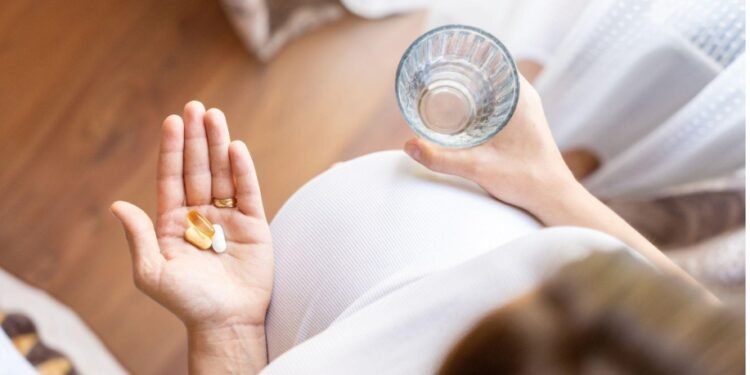Contents
- 1 Iron for Women: Why Is It So Important?
- 1.0.1 Related posts
- 1.0.2 Naturopathy: Harnessing the Body’s Natural Healing Power
- 1.0.3 Comprehensive Alternative Cancer Treatments at VeritaLife: A Personalized Approach
- 1.0.4 Unveiling the Potential of Chelation Therapy: A Comprehensive Overview
- 1.0.5 Alternative Cancer Treatments: A Comprehensive Overview
- 1.0.6 Why You Should Try Stem Cell Therapy
- 1.0.7 Exercise With Oxygen Therapy (EWOT): A Revolutionary Approach to Health Enhancement
- 1.0.8 Top Tips for a Balanced Lifestyle
- 1.1 Why Do Women Need More Iron?
- 1.2 How Much Iron Do Women Need?
- 1.3 10 Common Symptoms of Iron Deficiency in Women
- 1.4 Conclusion
Iron for Women: Why Is It So Important?
Did you know that one in every five women has iron deficiency? You heard that right! As compared to men, a much higher percentage of women suffer from the impacts of low iron levels in their bodies. Do you want to stay out of that list? Then you must take active measures to boost your iron levels to optimise your health and well-being.
In this blog, we will understand why women require more iron every day than men, learn about the common symptoms of iron deficiency and explore easy ways to shoot up iron levels in women. Let’s find out why iron is every woman’s bestie!
Why Do Women Need More Iron?
As per the European Food Safety Authority (EFSA), Iron contributes to the normal formation of red blood cells and haemoglobin and normal oxygen transport in the body. Without adequate haemoglobin levels and oxygen flow, your organs can’t function properly, thereby affecting your physical and mental well-being. Iron is also needed for maintaining optimal energy levels and bolstering the immune system. So, that means iron is essential for all. Then why do women need more iron? A woman’s body goes through several biological changes, which are mainly responsible for the extra iron requirements in their body. Here are two main reasons why women require more iron than others –
Compensating Menstrual Loss: Women’s iron requirement is especially high during the reproductive years due to menstrual blood loss. Every month, the iron levels in women decrease with blood loss during menstruation, leading to an iron deficit. To compensate for the loss, menstruating women need to intake iron from outside sources such as iron-rich foods or supplements such as iron gummies, tablets or liquids.
Fulfilling Pregnancy Needs: Pregnant women are at a higher risk of iron deficiency than other women due to the surge in iron needs during the gestation period. During the Mum-to-be phase, women require iron not only to support their health but also to ensure the proper growth of the baby in the womb, thereby causing an increased need for iron.
How Much Iron Do Women Need?
As per the reports of the World Health Organization (WHO), the daily iron requirement for women is twice as much iron as required for men. For example, while an adult man needs 8 mg of iron daily, an adult woman needs 18 mg every day to fulfil her iron requirement. Having said that, during the post-menopausal phase, women’s iron requirement drops down and almost becomes equal to men’s. Here’s a list showing the amount of iron needed by women of varying ages and demographics:
| Women’s Demographics | Daily Iron Requirement (in mg) |
| Children (1-13 years) | 7-10 |
| Teen Girls (14-18 years) | 15 |
| Adult Women (19-50 years) | 18 |
| Pregnant Women | 27 |
| Breastfeeding Women | 9 |
10 Common Symptoms of Iron Deficiency in Women
Is your body telling you it needs iron? If you notice carefully, your body manifests an iron deficiency through various symptoms. Here are some common symptoms you may experience if you have low iron levels or are suffering from iron deficiency anaemia:
- Constant weakness and fatigue
- Breathing problems
- Dizziness
- Heart palpitations
- Frequent illnesses like a common cold
- Pale skin
- Brittle nails
- Cold hands and feet
- Headache
- irritability

- How to Boost Iron Levels in Women?
You surely don’t want to encounter any of the above-mentioned symptoms of iron deficiency, right? To ensure that, you need to incorporate some changes in your diet and lifestyle to boost your body’s natural iron levels. Here are some pro tips on how you can easily maintain optimal iron levels in your body:
- Eat Iron-Rich Foods: The best and most obvious way to boost your iron intake is to consume foods rich in iron. Some of such iron-dense foods include lean meats, eggs, seafood, beans, lentils and fortified cereals. If you are not a vegetarian, it’s better to go for animal-based iron sources as the plant-based ones contain non-heme iron, which is not as easily absorbed by the body as non-vegetarian iron sources.
- Pair Iron with Vitamin C: If you’re concerned about the absorption of iron, simply pair the iron food source with vitamin C-rich foods and you’re good to go! Vitamin C enhances iron absorption in the body, helping you feel the benefits better.
- Consider Iron Supplements: If you are not able to get enough iron from your daily diet, then simply go for an iron supplement. These supplements come in the form of tablets, capsules, liquids or gummies, offering a convenient way to boost iron anytime, anywhere, even on the go. With the precise dosage, iron supplements make it easier for you to monitor your levels and avoid an overdose.
Conclusion
The mighty mineral, iron, acts as a lifeline for women. From supporting the haemoglobin levels to boosting energy to fortifying the immune system, iron helps you unlock your best version. Whether you are in your menstruating phase, are pregnant or in your post-menopausal phase, you need iron to maintain optimal health and well-being throughout your life. So, make sure you level up for the iron game by consuming enough iron-rich foods or iron supplements to keep the symptoms and harmful effects of iron deficiency out of the picture. Revitalise your body with iron power today. Your body will surely thank you for it!

















